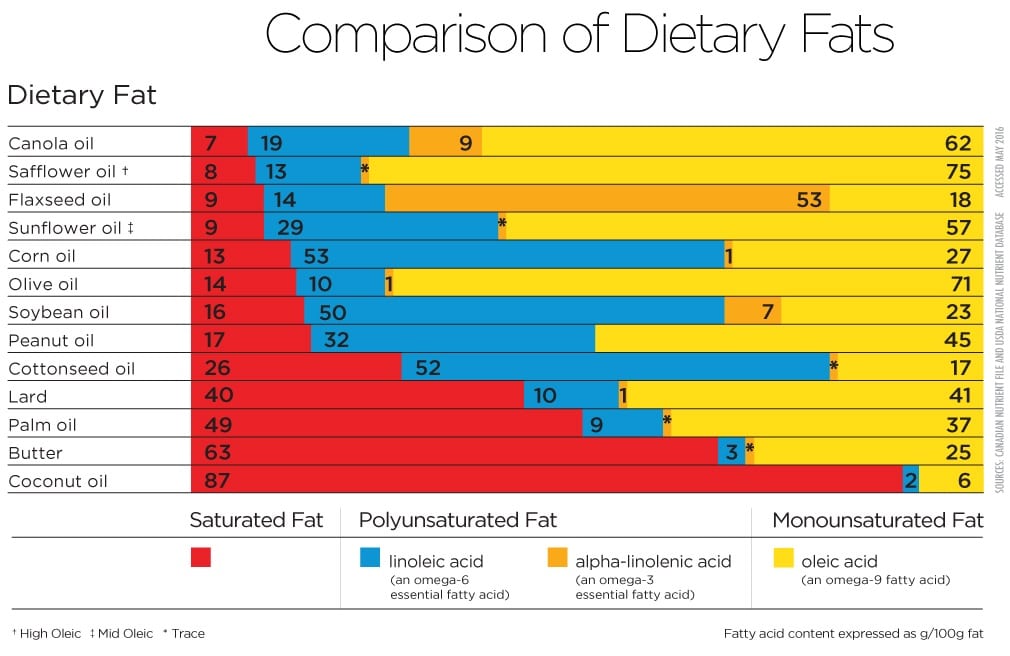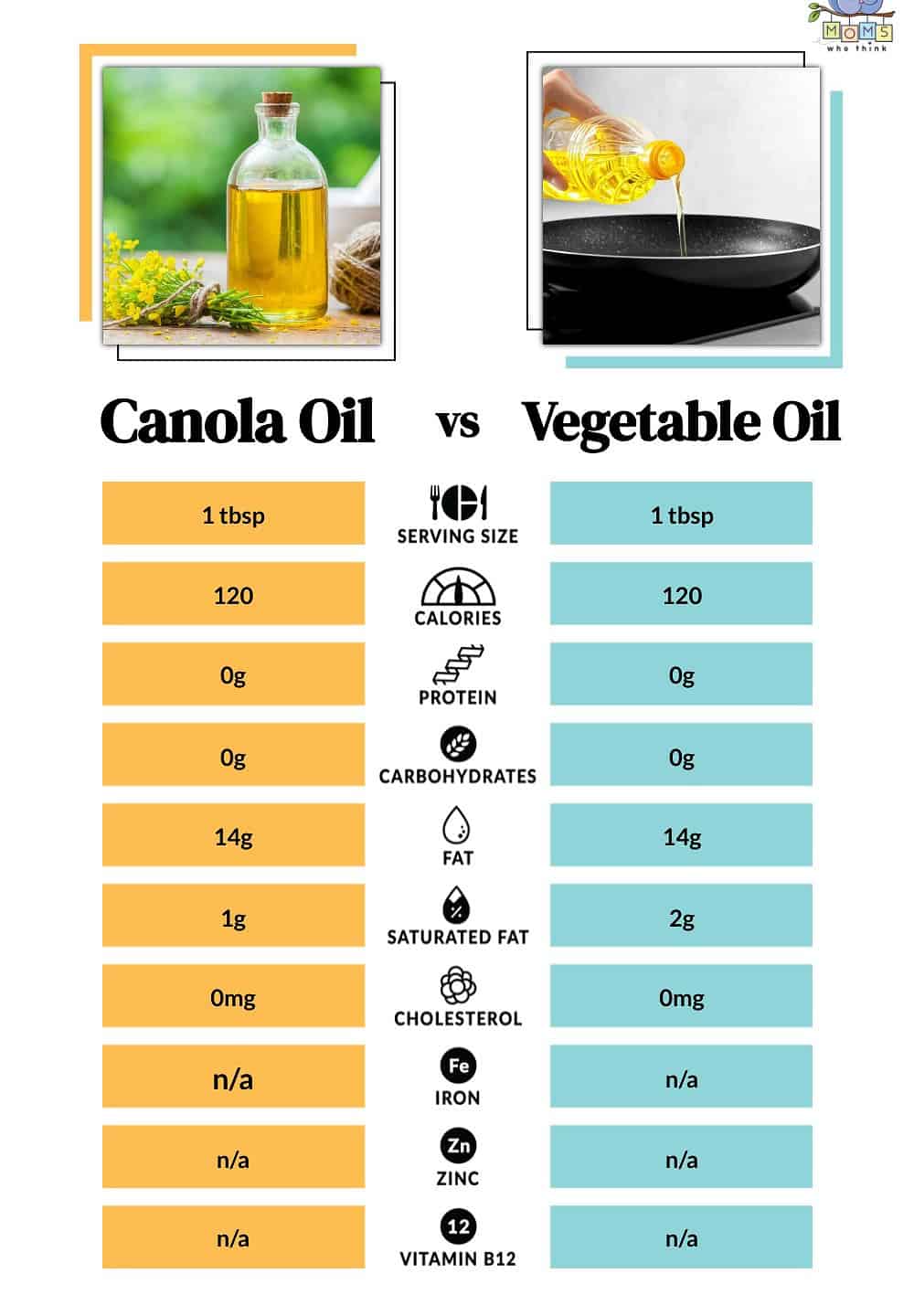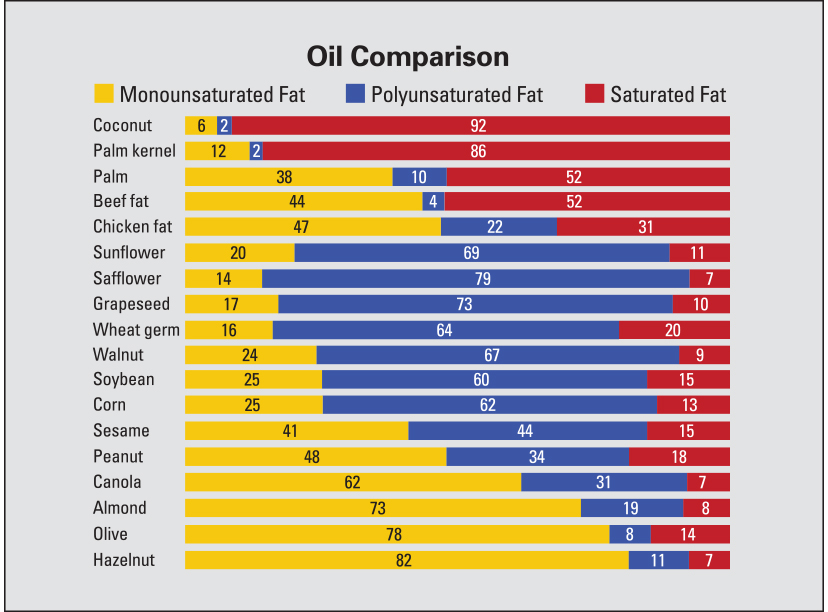Introduction

In the world of cooking oils, soybean and canola oil are two popular choices. These vegetable oils are often used interchangeably, but they have distinct characteristics that set them apart. This article aims to provide an overview of soybean and canola oil, comparing their nutritional profiles, smoke points, flavor, and health benefits. By understanding the differences between these oils, readers can make informed choices in their cooking routines and reap the benefits of these versatile ingredients. So let’s dive in and explore the unique qualities of soybean and canola oil.
Overview Of Soybean And Canola Oil
Soybean oil is derived from soybeans, which are legumes native to East Asia. It is a popular cooking oil known for its high content of polyunsaturated fats, particularly omega-6 fatty acids. Canola oil, on the other hand, is derived from the seeds of the canola plant, which is a type of rapeseed. Through breeding programs, canola oil has been developed to have lower levels of erucic acid and glucosinolates. It has a favorable balance of monounsaturated and polyunsaturated fats, including omega-6 and omega-3 fatty acids. Both oils are widely used in cooking and have distinct characteristics and health benefits.
Health Benefits And Cooking Properties
Soybean oil and canola oil offer various health benefits and have distinct cooking properties. Soybean oil is known for its high content of polyunsaturated fats, including omega-6 fatty acids, which may support heart health. It also contains vitamin E, an antioxidant that helps protect cells from damage. Canola oil has a favorable balance of monounsaturated and polyunsaturated fats, including omega-3 fatty acids, which have been linked to reducing inflammation and improving heart health. Both oils have a high smoke point, making them suitable for various cooking methods such as frying, baking, and sautéing.
Nutritional Comparison

When comparing the nutritional profiles of soybean oil and canola oil, there are some notable differences. Soybean oil is higher in polyunsaturated fats, particularly omega-6 fatty acids, which can contribute to inflammation when consumed in excess. On the other hand, canola oil has a more favorable balance of monounsaturated and polyunsaturated fats, including omega-6 and omega-3 fatty acids. Canola oil also has a lower saturated fat content compared to soybean oil. It’s important to consider these differences when incorporating these oils into your diet for optimal health.
Soybean Oil Nutritional Profile
Soybean oil is rich in polyunsaturated fats, especially omega-6 fatty acids. It contains vitamins E and K, which are beneficial for skin health and blood clotting. However, soybean oil has a higher omega-6 to omega-3 ratio, which can contribute to inflammation when consumed in excess. It also has a relatively high level of saturated fats. Considering these factors, it is important to use soybean oil in moderation and balance it with other oils that have a more favorable fatty acid profile.
Canola Oil Nutritional Profile
Canola oil is known for its favorable nutritional profile. It is low in saturated fat and contains high levels of monounsaturated fats, which are considered heart-healthy. Canola oil is also rich in omega-3 fatty acids, which have anti-inflammatory properties and are essential for overall health. Additionally, it contains vitamin E, an antioxidant that helps protect cells from damage. With its balanced fatty acid composition and beneficial nutrients, canola oil is a healthy choice for cooking and baking.
Smoke Point And Cooking Uses

Soybean oil has a smoke point of around 450°F (232°C), making it suitable for high-heat cooking methods such as frying, sautéing, and baking. Its mild flavor allows it to blend well with a variety of ingredients. Canola oil, on the other hand, has a higher smoke point of around 400°F (204°C). This makes it ideal for deep-frying and pan-frying, as well as for use in marinades and dressings. Both oils have versatile cooking applications, providing a neutral taste and the ability to withstand high temperatures.
Smoke Point Of Soybean Oil
The smoke point of soybean oil is around 450-475 degrees Fahrenheit (232-246 degrees Celsius). This high smoke point makes it ideal for high-heat cooking methods such as frying and sautéing. It can also be used for grilling and deep frying. The smoke point is the temperature at which the oil begins to break down and produce smoke. Using soybean oil for cooking at temperatures below its smoke point helps to preserve its flavor and nutritional properties.
Smoke Point Of Canola Oil
The smoke point of canola oil is approximately 400-450 degrees Fahrenheit (204-232 degrees Celsius). This makes it suitable for a variety of high-heat cooking methods, including sautéing, frying, and baking. Canola oil’s high smoke point means that it can withstand the high temperatures needed for these cooking techniques without breaking down and producing smoke. Using canola oil for cooking at temperatures below its smoke point helps to maintain its flavor and nutritional integrity.
Versatility In Cooking Applications

Soybean and canola oil are both incredibly versatile when it comes to cooking applications. Their neutral flavors make them suitable for a wide range of dishes and recipes. They can be used for sautéing, stir-frying, deep-frying, baking, and even as a base for salad dressings and marinades. These oils have a high smoke point, allowing them to withstand high cooking temperatures without breaking down or producing smoke. This versatility makes soybean and canola oil go-to options for various cooking methods.
Flavor And Aroma
Soybean oil has a mild, neutral flavor that does not overpower the taste of dishes, allowing the natural flavors of ingredients to shine through. It has a subtle nutty aroma that adds a pleasant depth to recipes. Canola oil also has a neutral taste, but it has a very light and clean flavor profile, making it versatile for a wide range of dishes. Its aroma is subtle and does not compete with other ingredients. Both oils offer a neutral base that complements the flavors of various cuisines.
Taste Characteristics Of Soybean Oil
Soybean oil brings a mild and neutral taste to dishes, allowing the natural flavors of ingredients to take center stage. It has a subtle nutty aroma that adds depth to recipes. The flavor profile of soybean oil is versatile, making it suitable for a wide range of cuisines. Its taste is not overpowering, allowing other ingredients in a dish to shine through. Whether used in sautéing, frying, or baking, soybean oil enhances the overall flavor without being overly dominant.
Flavor Profile Of Canola Oil

Canola oil has a mild and neutral flavor profile, making it a versatile cooking oil. It brings a subtle richness to dishes without overpowering the natural flavors of ingredients. Canola oil has a clean and light taste, allowing the other flavors in a dish to shine through. It does not have a distinct aroma, which makes it ideal for a wide range of cuisines and recipes. Whether used in salad dressings, sautéing, or baking, canola oil enhances the overall taste of the dish without dominating it.
Impact On Dishes And Recipes
Both soybean oil and canola oil have a significant impact on the taste and texture of dishes. Soybean oil has a more pronounced flavor and a slightly nutty aroma, which can enhance the overall taste of fried foods and dressings. On the other hand, canola oil’s mild and neutral flavor allows the natural flavors of ingredients to shine through, making it a versatile choice for a wide range of cooking applications. Both oils contribute to the richness and mouthfeel of dishes while providing essential fatty acids and nutrients.
Health Considerations
When considering the health aspects of soybean oil vs canola oil, it is important to note that both oils have their own nutritional benefits. Soybean oil contains a higher amount of polyunsaturated fats, which are essential for maintaining heart health. On the other hand, canola oil has a better ratio of omega-6 to omega-3 fatty acids and a lower saturated fat content. However, it is crucial to use both oils in moderation due to their high calorie and fat content. It is recommended to incorporate a variety of oils into your diet for a well-rounded nutrient profile.
Health Benefits Of Soybean Oil

Soybean oil offers several health benefits due to its high polyunsaturated fat content. These fats are essential for maintaining heart health and reducing the risk of cardiovascular diseases. Soybean oil is also a rich source of vitamin E, an antioxidant that plays a crucial role in protecting the body against free radicals. Additionally, the omega-6 fatty acids in soybean oil help to promote brain health and support the immune system. Incorporating soybean oil into your diet in moderation can contribute to overall well-being.
Health Benefits Of Canola Oil
Canola oil offers several health benefits due to its nutritional profile. It is low in saturated fat and high in monounsaturated fats, which can contribute to heart health and help maintain healthy cholesterol levels. Canola oil also contains omega-3 fatty acids, which have anti-inflammatory properties and are beneficial for brain health. Additionally, it is a good source of vitamin E, an antioxidant that helps protect the body against free radicals. Incorporating canola oil into your diet in moderation can support overall well-being.
Nutritional Implications And Recommended Usage
From a nutritional standpoint, canola oil is often considered a healthier option compared to soybean oil. Canola oil has a lower saturated fat content and a better omega-6 to omega-3 fatty acid ratio. This makes it a favorable choice for maintaining heart health and reducing inflammation in the body. However, both oils should still be consumed in moderation as part of a balanced diet. It is recommended to use canola oil for cooking at higher temperatures, while soybean oil can be used for lower-heat cooking or as a salad dressing.
Conclusion
https://www.youtube.com/watch?v=y4NRu6XYtWQ&pp=ygUsU295YmVhbiB2cyBDYW5vbGEgT2lsOiBDb29raW5nIE9pbHMgQ29tcGFyZWQ%3D

In conclusion, the debate between soybean oil and canola oil comes down to personal preference and specific health considerations. While both oils offer nutritional benefits and can be used in various cooking applications, canola oil is often considered a healthier option due to its lower saturated fat content and better omega-6 to omega-3 fatty acid ratio. It is important to use these oils in moderation as part of a balanced diet. Incorporating both oils into your cooking routine can provide versatility and a range of flavors.
Summary Of Key Differences Between Soybean And Canola Oil
Soybean oil and canola oil have several key differences. Soybean oil is higher in polyunsaturated fats, specifically omega-6 fatty acids, while canola oil has a balanced ratio of monounsaturated and polyunsaturated fats, including omega-6 and omega-3 fatty acids. Canola oil also has a lower saturated fat content compared to soybean oil. Additionally, soybean oil has a higher smoke point, making it more suitable for high-heat cooking, while canola oil has a milder flavor and aroma. Both oils offer health benefits, but canola oil is often considered healthier due to its lower saturated fat content and better omega-6 to omega-3 fatty acid ratio.
Best Practices For Incorporating Both Oils Into Cooking Routines
When incorporating both soybean and canola oil into your cooking routines, it is important to consider the specific qualities and benefits of each oil. A good approach is to use soybean oil when high-heat cooking methods are required, such as frying or deep-frying, as it has a higher smoke point. On the other hand, canola oil is a versatile option for a wide range of cooking techniques due to its milder flavor and balanced fatty acid profile. It can be used for sautéing, baking, dressing, or marinades. Additionally, it is advisable to use canola oil more frequently due to its lower saturated fat content and better omega-6 to omega-3 fatty acid ratio, making it a healthier choice. Remember to store both oils in a cool and dark place to maintain their freshness and nutritional properties.
FAQ About Soybean Vs Canola Oil: Cooking Oils Compared
Q: What is the main difference between soybean oil and canola oil?
A: The main difference lies in their composition. Soybean oil has a higher proportion of polyunsaturated fats, while canola oil is rich in monounsaturated fats.
Q: Which oil is better for high-heat cooking?
A: Canola oil is better suited for high-heat cooking due to its higher smoke point compared to soybean oil.
Q: Are there any health benefits associated with soybean oil or canola oil?
A: Both oils have their own set of health benefits. Soybean oil is rich in omega-6 fatty acids, while canola oil is known for its heart-healthy monounsaturated fats.
Q: Can I use soybean oil and canola oil interchangeably in recipes?
A: Yes, you can generally substitute soybean oil for canola oil and vice versa in most recipes without a significant impact on the flavor.
Q: Which oil is more cost-effective, soybean oil, or canola oil?
A: Generally, soybean oil tends to be more cost-effective than canola oil, making it a budget-friendly option for cooking.
Q: Are soybean oil and canola oil suitable for vegan diets?
A: Yes, both soybean oil and canola oil are plant-based oils and are suitable for vegan diets.

Salsas by Karoll’s Catering is a vibrant and innovative Canadian fusion family restaurant that welcomes you to indulge in a delightful culinary experience. Every Sunday, from 11 am to 2 pm, we invite you for a delicious brunch that will tantalize your taste buds. Whether you prefer dining in or taking out, we ensure that our delectable dishes are available to savour at your convenience. In addition to our enticing Sunday brunch, we host a lively happy hour every Thursday, Friday, and Saturday. During this time, you can enjoy discounted food items, get $2.50 off on beer, and sip on refreshing $5 margaritas. It’s the perfect opportunity to unwind and relish in the flavours of our Canadian fusion cuisine.